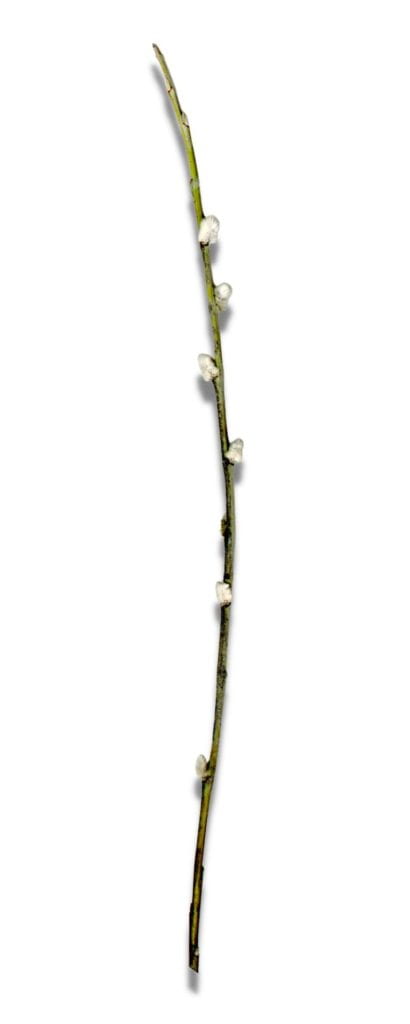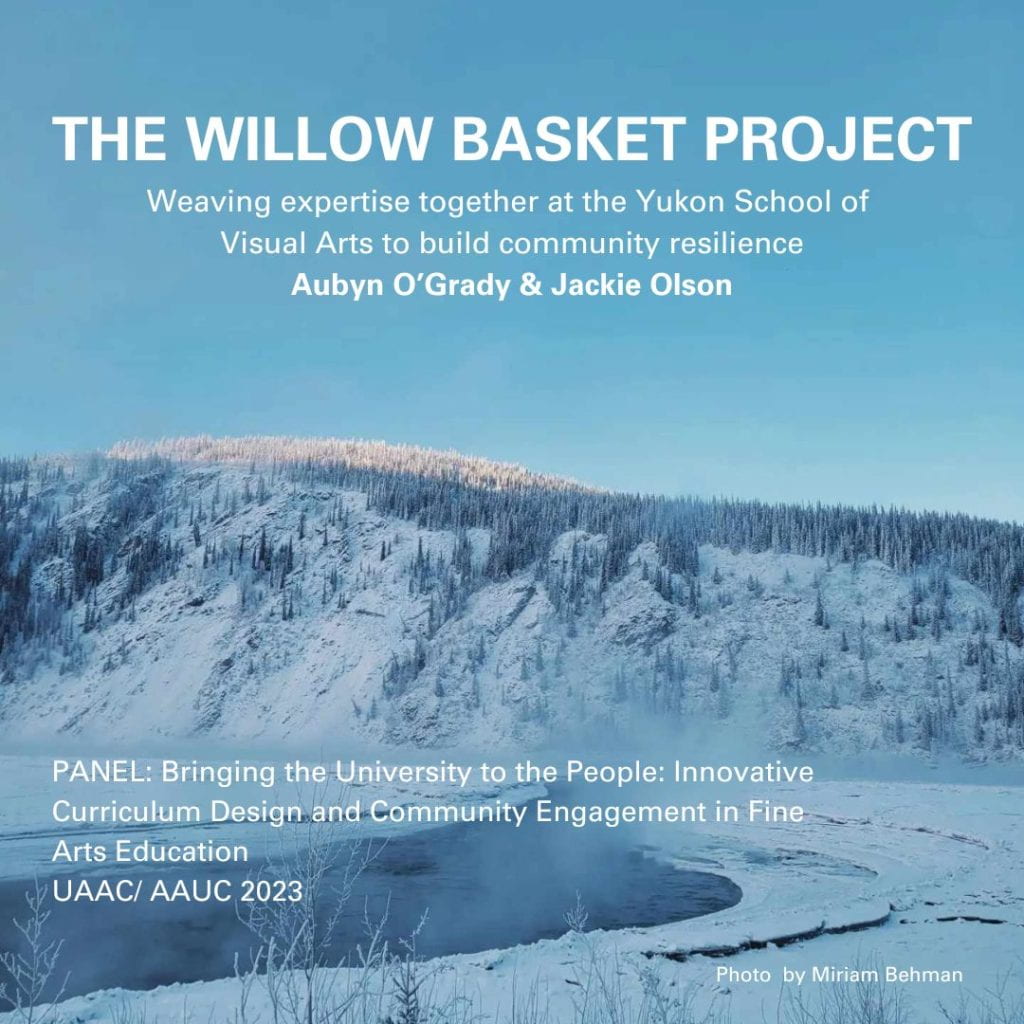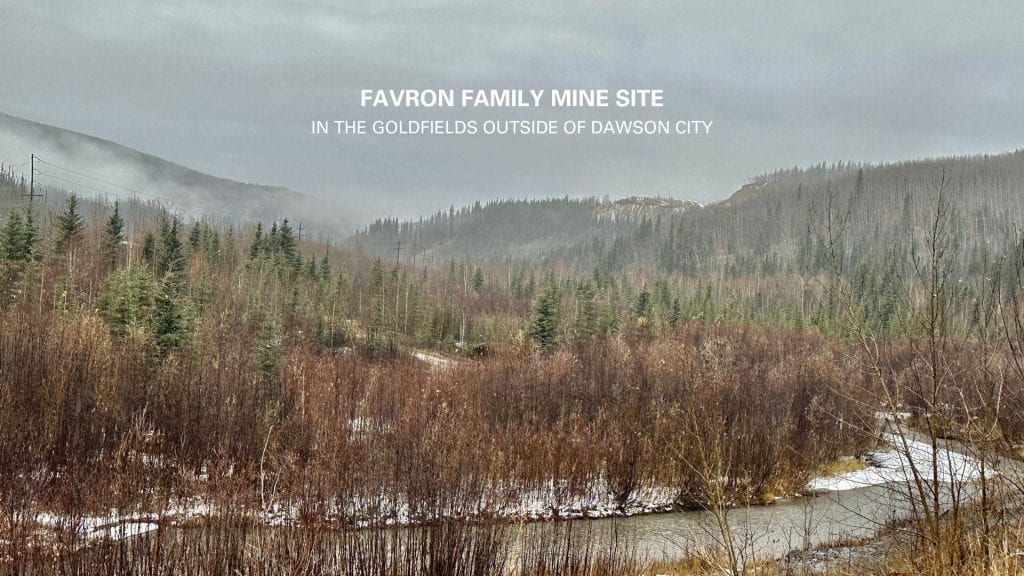Aubyn O’Grady & Jackie Olson, Yukon School of Visual Arts
K’ày’ t’ä nohshe | Willow leaves are growing

Project background and rationale
Yukon School of Visual Arts (YSOVA) Program Director Aubyn O’Grady has been working collaboratively with YSOVA’s First Nations Culture Instructor, Trʼondëk Hwëchʼin artist Jackie Olson, to develop a credit course based on the harvesting and processing of k’ày’ (willow) fibres at YSOVA. Willow grows abundantly in this territory, and there are countless uses for the plant at each stage of its growth throughout the seasons. The Indigenous and Northern Relationship Development Fund supported Aubyn and Jackie in expanding the course to encompass the entire life cycle of willow- from bud to harvest, a version of this course was piloted in fall of 2023.
With the new course syllabus, we also developed a framework to help us hold knowledge about the use and value of locally sourced and foraged art materials. We approach the framework for this course as though we are weaving a willow basket; the development of this course gives us a base and form to hold to the larger goal of the project, which is to establish an experimental Summer Institute for the testing of sustainable local art and building materials. YSOVA does not currently run programming in the summer so the project has a physical space to take root, and the summer is a bountiful time for foraging natural art materials on the land.
However, beyond having a school to run programming out of, we needed access to land to gather on, forage, and envision long-term, large scale artist interventions. We established a partnership with the Klondike Placer Miners Association, who connected us with three placer miners willing to give the project sustained access to claims that they have already mined. By providing artists access to post-mined land, we are supporting the potential for artists to explore and develop large-scale, site-specific, sustainable environmental artworks drawing on reclamation processes such as land contouring and shaping. Working at this scale is not typically available to artists here because of limited access to and lack of availability of land. We acknowledge the continued significance of placer mining as an economic driver for family-owned operations in the region. Simultaneously, we recognize that art remains a vibrant economic driver in Dawson City, introduced as a more sustainable model than the boom and bust cycles of resource extraction. The Willow Basket Project brings those two worlds together on literal common ground. The success of this project relies on the active participation and support of placer miners, artists, and our community. The project will continue the legacy of local hospitality, creative practice, and stewardship in our region.
We piloted a version of Expanded Field: Local Materials that employs the site of the willow farm on the Favron Mine as an outdoor classroom space. Expanded Field students spend class time contributing to the maintenance of the farm while also experimenting with large willow forms and armatures. Access to these post-mined sites will also allow for us to host a land-art based field school and other programming through YSOVA that will take place on post-mined claims for 1-2 weeks each summer. Our goal is to establish a larger Summer Institute, and we view the summer programming as contributing towards its eventual establishment.
The project also established a Mining Artist Residency Program, a paid opportunity for artists to bring their expertise and land-art visioning to a different post-mined site each year. We offered the inaugural residency to Jackie Olson who used the time to establish a willow farm on a post-mined claim at the Favron family mine. Willow is one of the first plants to take root once land has been disturbed, but Jackie is looking to experiment with more intentional ways of controlling how willow grows, and what kind can grow, so that she can have more consistency in her willow-paper and sculpture practice. The Indigenous and Northern Relationship Development Fund allowed for Jackie to travel to the Willow Wood Farm on Vancouver Island to study how domestic and local willows are cultivated, harvested, and stored. Further, we supported Jackie in attending the With Trees: The New? Material! Relations Project hosted by Emily Carr University of Arts and Design (EUCAD). Broadly, the With Trees projects involved a series of workshops connecting design students and members of the Aboriginal Gathering Place at EUCAD with scientists at UBC who work with plant and tree fibres. Jackie presented at one of the With Trees workshops. The fund also supported Sue Parsons, Collections Manager of the Trʼondëk Hwëchʼin Heritage Department, to accompany Jackie.
Project Funders
We extend our heartfelt thanks to the Global Arctic Leadership Initiative at Memorial University for their generous financial support with the Indigenous and Northern Relationship Development Fund, administered by the Harris Centre.


